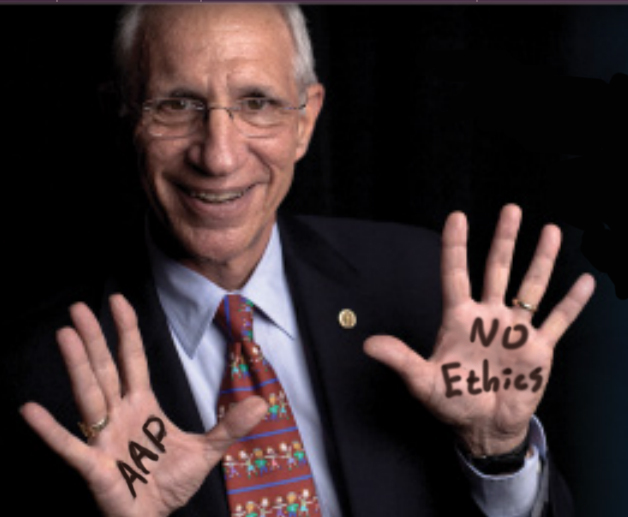Donald G. McNeil, Jr.’s recent New York Times article, AIDS Prevention Inspires Ways to Make Circumcisions Easier, applauded medical equipment manufacturers for producing single-use circumcision instruments efficient and “safe” enough to circumcise 20 million men in sub-Saharan Africa. The article accepted at face value claims that mass circumcision will reduce the spread of HIV, and ignored the ethical problems of a U.S.-funded sexual surgery campaign carried out upon the bodies of black African men.
On February 7, the New York Times printed two responses, one of them mine. Under the heading, Business of Circumcision, my letter reads:
To the Editor:
Re “AIDS Prevention Inspires Ways to Make Circumcisions Easier” (Jan. 31): With 20 million men targeted to undergo “assembly-line” circumcisions, it’s no surprise that medical equipment manufacturers are rushing to cash in. It appears, though, there’s no money to be made from informed consent; that issue didn’t figure anywhere in this enthusiastic report on the plans of researchers and organizations dominated by white, circumcised Westerners to surgically reduce the penises of poor, non-English-speaking Africans.
The male foreskin comprises 15 square inches of erogenous tissue. Its removal results in an open wound and permanent reduction of sexual sensation.
Georganne Chapin
The second letter extols the virtues of the Shang ring, one of the two circumcision devices mentioned. The authors of this letter are physicians affiliated with the questionable research and HIV “prevention” agenda for Africa.
The plan to circumcise 20 million African men is a sinister combination of cultural/medical imperialism and the big business of international health. The researchers who have made their careers by promoting mass (and even universal) circumcision are almost all Americans. Several were known for their pro-circumcision agenda before they ever became involved in the African “trials”—which were, from the onset, really circumcision campaigns. Participants were randomized into two groups, “circumcise now” and “circumcise later,” rather than “circumcised” and “not circumcised,” which would have been the proper way to study objectively whether circumcision status truly affects HIV transmission. (See, e.g., Gray RH, Kigozi G, Serwadda D, et al., Male circumcision for HIV prevention in men in Rakai, Uganda: a randomised trial, Lancet 2007; 369: 657–66.)
Promoters of circumcision as HIV prevention, and the press reporting on these efforts, both fail to acknowledge the methodological problems with the African studies. These same researchers’ own subsequent work has shown that male circumcision actually increases women’s risk of contracting HIV from their circumcised partners. The research subjects have become victims of the intentionally promoted fallacy that circumcision is a “vaccine” against HIV. A recent investigation in Zambia showed that many men circumcised as part of a mass circumcision effort there resumed unprotected sex before their incisions healed, jeopardizing their wives or girlfriends—women who will find it very difficult to negotiate “safe sex” with men who believe they’ve just received a surgical “vaccine.”
Inextricably intertwined with the bad science is the utter disregard for ethical and public health issues begging to be acknowledged in any report on the African circumcision campaign.
For example:
How do you ensure informed consent in a population of poor, non-English-speaking men, who are being lined up, hundreds in a day, to have part of their genitals removed?
How do you ensure partner education, when men who do not know or wish to know their HIV status are being circumcised anyway, without being tested—leading them to believe that they are now “safe” from AIDS?
How, despite the promotion of single-use surgical devices, do you ensure that there is no re-use of contaminated medical instruments—syringes, scalpels, scissors, etc.—and how do you ensure safe disposal of medical waste in countries with inadequate sanitation and an underdeveloped health care infrastructure?
How do you ensure that men who develop serious complications—not to mention circumcised men and their female partners who still contract HIV—are appropriately treated and even compensated for what they have lost, due to our peculiar fixation on altering the male anatomy?
Mostly, how do we get the mainstream American press to ask these obvious questions? Why is getting the truth out dependent on me managing to get a 100-word letter printed in the New York Times?
—Georganne Chapin








Joseph4GI
February 8, 2012 2:44 pm“…women… will find it very difficult to negotiate “safe sex” with men who believe they’ve just received a surgical ‘vaccine.'”
What’s almost comical is how some advocates of male circumcision, such as Billary Clinton, Katheryn Hankins etc., actually have the nerve to call male circumcision a tool for “gender equality.”
Yes! Let’s arm circumcised men with a false sense of security and make it more difficult for women to negotiate safe sex! That oughta make things equal…
Bettie M.
February 8, 2012 3:06 pmMostly, how do we get everybody to understand that the presence of HIV is a marker, and not a cause?
Keith Rutter
February 8, 2012 5:04 pmIf circumcision prevents HIV transmission, can someone tell me how men in the US, where most of them are cut, have a much higher rate of HIV infection than men in Europe, where most men are intact?
jimfromcalif
February 9, 2012 6:43 pmThe claim that circumcision prevents HIV infection is just a myth propagated by those who become sexually excited at the very thought of circumcision.
Dr John Glazebrook
February 8, 2012 5:10 pmMore garbage from the anticircs !!!!
How does reducing the prevalence of HIV AIDS in men by 60 % increase the risk to women ? Apparently by resuming sex to soon This assumes that the newly circumcised man already has AIDS or is consorting with other women who are transmitting it Either way circumcision is to blame
The scientific facts are that CIRCUMCISION reduces the risk of contracting HIV AIDS by 60 to 70 % This benefit is LIFELONG and not dependent on whether a condom is used or not
There is no foreskin to facilitate the uptake up and entry of the virus into the body
The tests used to detect the presence of the virus in the foreskin are extremely sensitive and highly specific The PCR reaction can detect 1 or 2 viral particles by the presence of their DNA and the fluorescent antibody test shows exactly where they are located (in the Langerhans cells that line the foreskin)
Do the anticircs care whether millions of uncircumcised men in Africa will contract AIDS and die I think NOT !!!
The WHO is doing a brilliant job there with its mass circumcision programs
Joseph4GI
February 8, 2012 6:21 pmAhem…
“Doctor” John Glazebrook… you don’t seem to be registered anywhere in Australia.
http://www.ahpra.gov.au/
Are you sure your real name isn’t Brian Morris?
Joseph4GI
February 8, 2012 6:47 pm“How does reducing the prevalence of HIV AIDS in men by 60 % increase the risk to women ? Apparently by resuming sex to soon This assumes that the newly circumcised man already has AIDS or is consorting with other women who are transmitting it Either way circumcision is to blame”
No, this is assuming that HIV is a blood-borne disease, and that having sex with an open wound is going to increase a man’s chances of getting HIV from an infected partner. The man will have a higher chance of getting infected, thus increasing the chances of his partners.
Yes, quite directly, circumcision would be to blame.
If I’m not mistaken, the idea that circumcision “reduces the chances of HIV transmission by 60%” also assumes that a man will be “consorting with women who are transmitting [HIV].” Way to shoot your own cause in the foot, Brian.
“The scientific facts are that CIRCUMCISION reduces the risk of contracting HIV AIDS by 60 to 70 % This benefit is LIFELONG and not dependent on whether a condom is used or not
There is no foreskin to facilitate the uptake up and entry of the virus into the body.”
No, the scientific facts reveal that there is no causal link between the foreskin and a higher risk of HIV transmission. Some really faulty “trials” show a difference in a very tiny subgroup of men, which was 1.37% when taking into account all of the men in the study; not too significant. This infinitesimally miniscule difference is not consistent with real world data, and the “benefit,” if it could be called any, would not be “life long,” but only the length of the trials, which were cut short.
Even if circumcision were to “reduce the risk of HIV transmission by 60%” (which the real difference was 1.37%), it would only do so in men, and, according to the research, women would be 50% more likely to get HIV from circumcised partners.
Condoms, on the other hand, reduce the sexual transmission of HIV and other STDs by over 95%, in BOTH partners, and they also prevent unwanted pregnancy.
Even if circumcision were as “beneficial” as it is claimed, it would be a superfluous mutilation in light of cheaper, more effective, less invasive modes of protection.
“The tests used to detect the presence of the virus in the foreskin are extremely sensitive and highly specific The PCR reaction can detect 1 or 2 viral particles by the presence of their DNA and the fluorescent antibody test shows exactly where they are located (in the Langerhans cells that line the foreskin)”
The latest research visualizes the Langerhans cells *blocking* and *destroying* HIV, not facilitating its entry. I’m afraid this is quack science akin to creationism…
—————————————-
de Witte, Lot; Alexey Nabatov, Marjorie Pion, Donna Fluitsma, Marein AW P de Jong, Tanja de Gruijl, Vincent Piguet, Yvette van Kooyk, Teunis B H Geijtenbeek (2007-03-04). “Langerin is a natural barrier to HIV-1 transmission by Langerhans cells” (PDF). Nature Medicine. doi: 10.1038/nm1541. http://www.circumcisionandhiv.com/files/de_Witte_2007.pdf.
“Do the anticircs care whether millions of uncircumcised men in Africa will contract AIDS and die I think NOT !!!”
Of course we do. That’s why we’re against circumcision, which, not only is needless mutilation, but also offers little to no protection against HIV.
Do the pro-circs not care that circumcision destroys part of the penis, eliminating its most sensitive part?
Do they not care that promoting circumcision is going to give men a false sense of security and forgo the use of condoms, which even the authors of the latest “studies” cannot seem to stress enough?
“The WHO is doing a brilliant job there with its mass circumcision programs.”
The WHO is an incompetent political organization that will sooner or later regret ever having endorsed genital mutilation as HIV prevention.
jimfromcalif
February 9, 2012 6:41 pmHow do you explaing the high rates of HIV infection in the US, a country with among the highest rate of circumcision. At the same time, non-circumcising countries of Europe had rates of HIV infection nowhere nearly the reates in the US. That is diametrically opposed to your theory!
wildwahinepaddler
February 15, 2012 10:26 pmOnly a troll calls people names. If circumcision did actually do all the things you say, then that would be the only thing needed. Clearly you don’t know what you are talking about when you say lifelong benefit even without a condom, when condoms are the only proven method to avoid HIV transmission. This is a tell tale sign of a troll! Go play your games elsewhere.
Maria
February 8, 2012 5:29 pmThis campaign in Africa, and comments from ‘Dr. Glazebrook’ underscores our intense desire to spread our imperialism into the bush, at the expense of men, women, and entire communities. It makes me sick to my stomach. How are we going to handle this when it blows up in our faces because circumcision is not a vaccine, it’s not a prevention, and it’s a gross violation of human rights? The NYTimes article, and others like it, make me rock my head in my hands in disbelief.
Jerrold
February 8, 2012 5:30 pmTo the first commenter:
Are you sure you’re actually a doctor?
An educated person who wries “to soon” instead of “too soon”?
Joseph4GI
February 8, 2012 6:56 pmJerrold, if you Google this “Glazebrook” fellow, his name appears along side Brian Morris and Alex Wodak in Australia. If you look for a Dr. John “Glazebrook,” he doesn’t seem to be registered anywhere in Australia as any kind of doctor.
http://www.ahpra.gov.au/
I suspect him to be none other than Brian Morris himself, as the rhetoric and hysteria are so remarkably alike…
Jerrold
February 8, 2012 8:43 pmTo Joseph:
I guess his childlike spelling mistake gave him away, huh?
Joseph4GI
February 8, 2012 8:53 pmMore like his shrill histrionics…
Jerrold
February 8, 2012 5:33 pmCORRECTION:
I was addressing my comment to Dr. Glazebrook, not to the first commenter as I initially said.
James Loewen
February 8, 2012 6:58 pmThanks for clarifying things about this Joseph. Circumcision enthusiast “Doctor” John Glazebrook needs provide some credentials to back up his demands to override human rights and cut everyone. I smell fraud.
Steve C
February 9, 2012 12:30 amHey Doctor John Glazed-look, do you actually do any reading or do you spout out verbatim what other pro-butchers do?
I would also like to know what medical field you specialized in. My guess is Proctology, honestly.
Petite Poulet
February 9, 2012 8:57 amThe Australian troll has returned. If you ignore him, he will give up and go home. Most of the readers of this blog know that circumcision will only increase the infection rate of HIV in Africa. No use arguing with someone who’s mind is made up and not willing to consider other information.
Dan Bollinger
February 11, 2012 9:48 amThat’s good advice. Don’t feed the trolls!
jimfromcalif
February 15, 2012 3:02 amThe man is obviously mentally deranged. I too believe he is that screwball Morris.
Bryan
February 11, 2012 10:07 pmI just read that Manitoba became the second Canadian province after Newfoundland to ban the practice of cropping dogs’ ears. Manitoba veterinarians will no longer crop canine ears for cosmetic purposes, under a bylaw that makes the surgery illegal. The ban is for dogs’ own good, said one leading vet who backs the ban. “It’s surgery and there are risks. We need to change breed standards and that’s what veterinarians feel. We’re looking out for animal welfare.”
I believe in protecting animals from abuse, but it’s kind of ironic that we are willing to enact a bylaw such as this… yet refuse to ban the cropping of our son’s penises. It’s difficult to understand such a scenario where we elevate the rights of animals above that of human beings, at least male human beings. Bryan
Michael Steane
February 13, 2012 5:48 amI joined a circumcision fetish site for a while to see what goes on there. While I support the right of adults to have their own genitals mutilated, there were some members who said that they were going to circumcise their children and expressly stated the reason: they though circumcised genitals were sexy.
I strongly suspect that a lot of the support for mass circumcision campaigns in Africa come from 1. those with a financial interest (one of the threee “studies” that show circumcision reduces the transmission of HIV was carried out by the inventor of a clamp to hold victims in place during the operation.) and 2. circumcision fetishists.
jimfromcalif
February 15, 2012 3:01 amMost people who contribute to sites such as that have some severe mental problems. While they do have influence over some people, I highly doubt very many take them seriously. If they act the same in other matters of life as they do in regard to circumcision, it is a wonder they are not all locked up.
Lillian Cannon
February 15, 2012 6:14 pmDear God. How could you stand it? And didn’t they check your “credentials” to make sure you were one of them?
eshu21
February 22, 2012 1:20 amThe website circleaks.org lists one such group, the Gilgal Society (its name apparently means “hill of foreskins”), and talks about its doctor-members, including Bertran Auvert and Robert Bailey, both of whom have participated in pro-circumcision research in Africa; the crazy Australian Brian Morris is also a member. You can find the article at: http://www.circleaks.org/index.php?title=Gilgal_Society
The article says “Groups such as the Gilgal Society, the Acorn Society, and the Cutting Club openly admit to a morbid fascination with circumcision to the point of sado-masochistic fetish. These groups advertise that doctors are among their members. There are those on the Internet who discuss the erotic stimulation they experience by watching other males being circumcised, swap fiction and about it, and trade in videotapes of actual circumcisions.” And these are, in part, the people affecting World Health Organization policy…
Lillian Cannon
February 15, 2012 6:07 pmIt is endlessly amazing to me how little understanding many doctors have of the history of medicine, medical ethics, African colonial history, and unethical medical experiments from the past. The current experiment in Africa is unethical in so many ways, chief among them the unintended, yet very foreseeable, moral hazard of giving the impression that circumcision will prevent men from getting HIV. This alone ought to be enough to halt the program, but unfortunately, their lack of historicity blinds them to the fact that they’re basically indulging in some really fantastic cultural imperialism: “Don’t you DARE cut your girls, because that’s just too gross; but definitely cut your boys…”
On top of all that blind madness, the vast majority of the public doesn’t have the education to understand the studies, and the media is not publicizing all the studies that showed that circumcision increased HIV transmission. I am hesitant to ascribe this to conspiracy theories; I think it is just that we are all products of our culture, and the writers also have a deep psychological need and cultural compulsion to think of circumcision as beneficial. In a way, I think intactivism’s growing success is partly driving this: almost everyone online knows that circumcision is not okay, so they are thrilled to be able to write about it in a positive way. Frank always said they would fight us hardest at the end, and I think he was right.
Ed Rose
March 16, 2012 2:16 amOld post, but I’ll add to the questions you raise.
How about preoperative laboratory testing? Coagulation? Hematology?
How about transfusion services?
So far what ASCP has done in Africa involves cultivating centralized labs for flow cytometry for monitoring CD4 cells.
Frank OHara
May 5, 2012 5:59 pmJust a news flash/update:
Among the circumcision fetishists, one of their leaders, Vernon Quaintance has been arrested, tried and convicted of possessing child pornography. “Vermin” was the leader of The Gilgal Society and a member of several pro-circumcision/fetish web groups.
When it was announced last week about his conviction, it was quite amusing to watch the groups try to quickly disband and distance themselves from the issue and Vermin. Brian Morris was among the first to flee their “private” fantasy land. Morris is a university professor in Australia. I wonder when the university will find out about his activities. He’s going to have some explaining to do.
Among the others was Edgar Schoen, a rabid promoter of infant circumcision and the former (and disgraced) head of The AAP’s Circumcision Taskforce. Another one was a man who hosted a children’s television show in Canada. When his activities on circumcision fetish websites like Circlist were discovered, he was removed as the host. He remained as a member of the fetish group though.
That can give you an idea of how determined and irrational these people are. Others also risk their future to engage in this activity. Personally, I can not imagine doing that
Pingback: When Bad Science Kills « The Intact America Blog
May 26, 2012 1:31 pmprescription glasses cheap
January 17, 2013 6:01 pmWay cool! Some extremely valid points! I appreciate you writing this post and
also the rest of the website is really good.
sunglasses over prescription glasses
January 29, 2013 6:30 amGreetings from Florida! I’m bored to death at work so I decided to check out your blog on my iphone during lunch break. I love the knowledge you provide here and can’t wait to take a look when I get home.
I’m amazed at how fast your blog loaded on my mobile .. I’m not even using WIFI,
just 3G .. Anyways, excellent site!